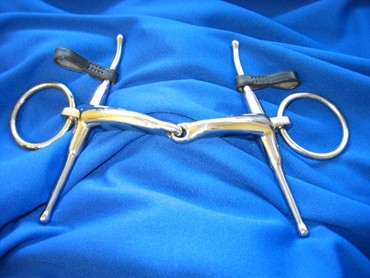The difference between the two elastics (Standard and Soft) is the amount of stretch they provide and therefore how firm a contact they encourage. Standard elastics require that the rider is willing to take up quite a positive contact in order for the horse to explore the elasticity and the concept of having connection to the rider that is consistent without it being fixed.
We introduced the softer elastics because we found that a lot of people who have been through one of the 'Natural Horsemanship' training programmes have spent a lot of time with little to no rein contact, and find it very challenging to go from that to the level of contact required to work with the Standard elastics. The soft ones are a kind of stepping stone.
In reality, most horses seem to need the level of security and consistency created by the firmer elastics, particularly when they are inexperienced and/or unbalanced. As the horse becomes stronger and more educated in the art of carrying a rider in balance, his need for a firmer rein contact diminishes because he spends more of his time in self carriage.
For more information about what the Eeezy Reins (TM) are for, click here.
